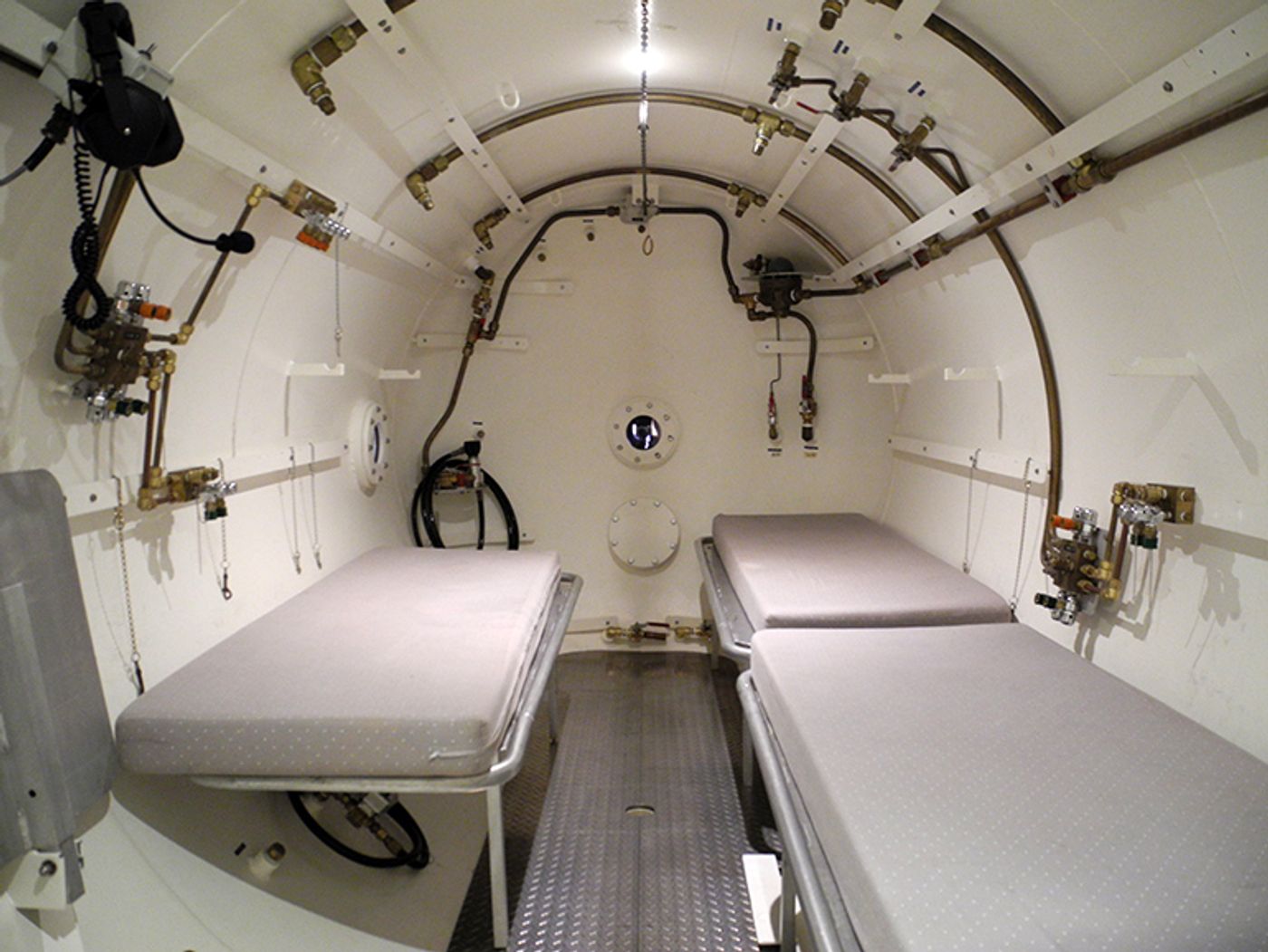Oxygen is a pretty amazing chemical element, without which life would not be possible. Now researchers at the Washington State University (WSU) say that oxygen may yet have another important medical use: helping opioid addicts by
curbing painful withdrawal symptoms.

The procedure is more involved than just giving patients oxygen through a mask or cannula. Rather, the treatment involves delivering pure oxygen in a high-pressure chamber, also known as hyperbaric oxygen therapy. Because the air pressure is tripled in the chamber, oxygen is taken in more effectively throughout the body than at normal air pressure.
Hyperbaric oxygen therapy has been a well-established treatment protocol for a variety of conditions, including decompression sickness and carbon dioxide poisoning, it has yet been tested or approved for treating addiction. Thus, the team at WSU investigated whether the benefits of pure, pressurized oxygen can help curb withdrawal symptoms.
The team, led by Raymond Quock, first mimicked the effects of addiction in mice by treating them with morphine sulfate (an opioid similar to heroin) for four days. They then induced withdrawal by administering naloxone. However, some mice received hyperbaric oxygen therapy before withdrawal while some mice did not.
They observed that mice treated with oxygen therapy appeared to have noticeably less severe withdrawal symptoms than control mice. The symptoms included jumping, shaking forepaws, wet-dog shakes, increased rearing, and increased defecation.
This study is “the first to demonstrate this phenomenon in an animal model of opiate dependence,” the author wrote.
How can oxygen really alleviate the painful symptoms of withdrawal? While the scientists are still working out the exact mechanisms behind this, Quock theorized that the brain’s opioid sensing system and the pain-relief system both respond to oxygen in some way. “If hyperbaric oxygen can activate the body’s internal opioid systems, it should be able to alleviate opioid withdrawal,” Quock explained. Oxygen is carried by the blood throughout the body, and a healthy dose of oxygen is known to stimulate anti-inflammatory healing in the body.
Next, the team plans to test whether this therapy is effective in humans. They hope clinical trials will “convince the FDA that this should be an approved indication,” said Quock.
According to 2012 data from Centers for Disease Control and Prevention (CDC), about 2 million Americans are addicted to prescription opioids. Addiction dramatically increases the risks for overdose, and the CDC estimates that every 19 minutes, someone dies from exactly that – accidental overdose. "Overdose deaths involving prescription opioids have quadrupled since 1999, and so have sales of these prescription drugs," said the CDC. Thus, the hyperbaric oxygen therapy could be of “profound importance” in the rise against addiction as a public health crisis.
Additional source:
Washington State University
 The procedure is more involved than just giving patients oxygen through a mask or cannula. Rather, the treatment involves delivering pure oxygen in a high-pressure chamber, also known as hyperbaric oxygen therapy. Because the air pressure is tripled in the chamber, oxygen is taken in more effectively throughout the body than at normal air pressure.
The procedure is more involved than just giving patients oxygen through a mask or cannula. Rather, the treatment involves delivering pure oxygen in a high-pressure chamber, also known as hyperbaric oxygen therapy. Because the air pressure is tripled in the chamber, oxygen is taken in more effectively throughout the body than at normal air pressure.







